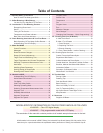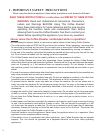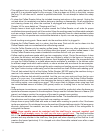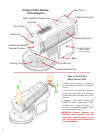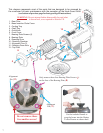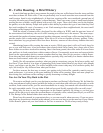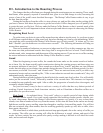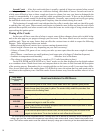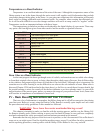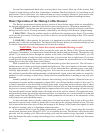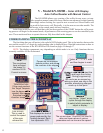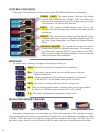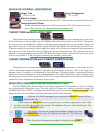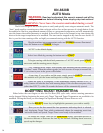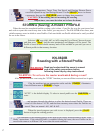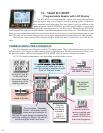
11
Bean Color as a Roast Indicator
As the roast progress the beans go though series of a subtle, and sometimes not-so-subtle color chang-
es from their original color, to green, to beige, then through a whole range of browns- first dull then shiny
as they darken, and progressing to brown so dark that it can look black. Although color is important, for
someone new to coffee roasting it can be difficult to use color as the sole indicator of roast. Bean color is
discussed Chapter VIII (and described in the chart above), so feel free to consult those for more details, but
for people learning to roast, the sound will be the best indicator as we have already stated. As your skills
and perception of the process grow, and as you narrow the range of your preferred roast levels, bean color
will increase in importance as an indicator of roast level.
IV -
Basic Roasting Instructions and Your First Roast
That was a lot of information to remember, but follow along and it will all become quite clear during
your first roast. Believe it or not, using the Hottop Coffee Roaster is actually quite simple and safe when
the procedures and safety guidelines in this manual are followed.
WARNING: Never leave the roaster unattended during a roast!
This chapter is intended to make you familiar with the roasting process, and the way the Hottop Cof-
fee Roaster actually works. Before starting to roast your first batch of beans, be sure you have completely
read and understand the safety precautions and instructions presented in this manual.
Remember that the only purpose of this first roast is to practice, so don’t be concerned if the coffee doesn’t
come out as you might expect. Don’t be afraid that anything can go wrong. If you follow the safety precautions
and the operating procedures, roasting coffee with the Hottop Coffee Roaster is fun, easy, and safe.
Temperature as a Roast Indicator
Temperature is an excellent indicator of the state of the roast. Although the temperature sensor of the
Hottop roaster is not in the beans through the entire roast it still supplies useful information that can help
you predict changes taking place in the beans. As you gain some experience this information will become
more useful in getting predictable and consistent results. For example, when roasting decaffeinated cof-
fee it will be more difficult to see color changes and there will not be as many cracks as “regular” coffee.
Temperature can be an important indicator with these beans.
The temperatures given below are those as displayed by the digital display of your roaster. These may
vary quite a bit from figures given from other sources and are meant as a general reference.
Up to 275 F.
Not much happening.
275-300 F.
The beans begin to turn more green
330-345 F.
Turning from green to yellow.
350-355 F.
The yellow has turned to a yellow-tan
360 F.
Mostly a light tan
370 F.
Medium tan
375 F.
Dark tan
385 F.
Light brown
400 F.
First crack begins
405-410 F.
first crack is active, then slows
410-420 F.
Beans are a beautiful medium brown
420 F.
Second crack begins
422-424 F.
Second crack quite active. Beans are a dark brown and becomming oily
425 F.
Beans are oily and smoke increases and is quite dense
426-428 F.
Second crack still active and the beans are very oily and getting darker



